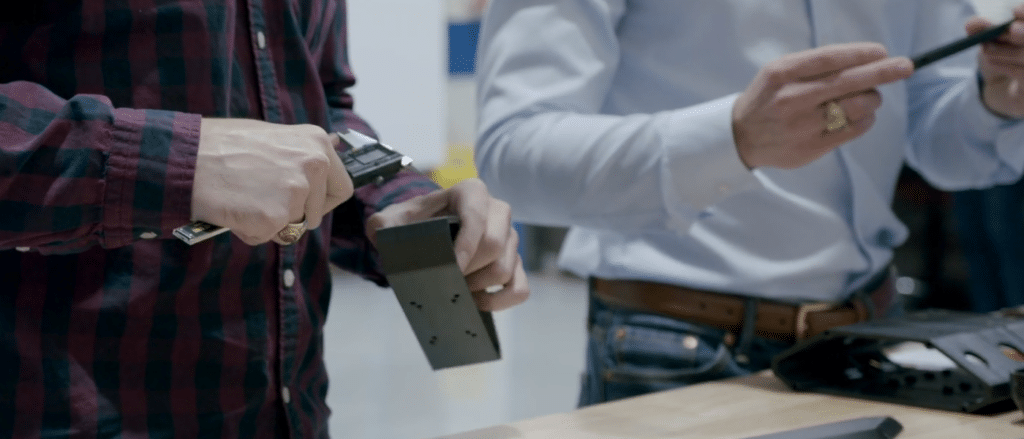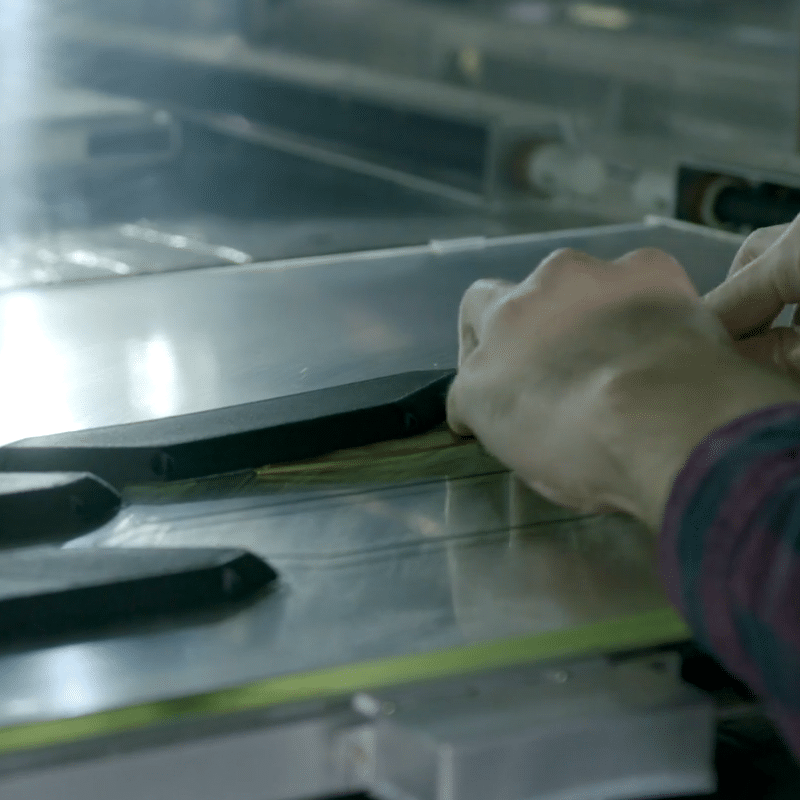Title image credit Essentium
Our recording of the Webinar – Lightning Fast – From IoT Concept to Pilot is available for replay at your convenience. In this webinar, we examine 3 innovations for connected IoT devices you should be aware of so you can spend less time in device development and more time in production.
The Connected IoT Device Design Process
The process of building a connected IoT device is complex. After all, you must combine electrical components provided by various vendors, optimized to consume battery or power, and in an enclosure suitable for the device purpose and environmental conditions. It is highly unusual to get all these elements correct on the first try. Thus, most device builds follow a graduated process of prototype, pilot, then production.
Prototype:
A working device with real-world components that delivers the information necessary to solve the business problem. At this stage, it’s common to take several shortcuts to avoid premature optimization. Integration testing and power management are important elements in this phase. Changes in this phase are relatively inexpensive so find as many problems as you can before the costs ratchet up.
Pilot:
A series (5-50) of working devices integrated with final-build components and using the form factor and environmental sealing necessary for field testing. At this stage, it is important to evaluate edge cases and fix bugs before heading to production. Fixing hardware, software, and enclosure issues at this stage is more expensive than the prototype stage, but orders of magnitude cheaper than fixing issues in the production phase.
Production:
A complete set of manufactured and complete devices suitable for field deployment. All issues should be worked out beforehand, especially ones related to hardware and enclosures. Some software issues can be fixed post-production using a Device Firmware Update (DFU) delivered Over The Air (OTA), but you’ll still have the fallout of problematic devices already deployed.
When working on your devices, you may iterate more than you might like. After all, devices are custom solutions and bring their own challenges requiring TEST -> DEVELOP -> RETEST cycles to find the right combination required for your device to work correctly. This happens more often than most people think and puts many consumers into a place called prototype purgatory. Prototype purgatory is the place where you get stuck between developing your excellent ideas and bringing them to life in your pilot. It is a complex process, and we all know IoT and complexity go hand in hand. Blues Wireless precisely exists to help commoditize the connectivity portion of IoT devices with our Notecard, system-on-a-module wireless card that automates getting sensor data to your cloud.

Get started with the Notecard for IoT Cellular Connectivity
Typical wireless IoT device development projects encounter various “strings” that encumber developers, restricting choice, and reducing development velocity. The Notecard was made to cut the encumbering strings of wireless IoT.
Notecard offers low power cellular, built-in accelerometer, a GPS module, and comes packaged with 500MB of cellular data usable over 10 years with connectivity available in 130+ countries. Data is secured at rest with an STSafe element built into the device at birth. Notecard easily integrates using an M.2 connector, snap it in, secure the Notecard via a screw and you are all set.
Notecard will accept sensor data and transmit via the cellular network to Notehub.io, a cloud service managed by Blues Wireless that secures your data and routes it to your cloud application of choice. Notehub.io has built-in support for popular clouds and cloud applications like Google Cloud Platform and Azure. Data in transit is secured through a virtual private network from the Notecard to Notehub.io, and then via private secured channels from Notehub.io to your cloud.
Having a Notecard connected to Notehub.io can save you weeks of development time so you can focus more on the sections of your device that solve your business problem. There are no activation fees, no monthly data plans, and there’s no ticking clock. Notecards are available at Sparkfun Electronics, Digi-Key Electronics, and Blues Wireless. Although Notecards are very helpful, they’re just one of the components to develop your design lighting fast.
The Importance of Selecting the Right Device Designer
While working on turning your concept into a pilot and then into high-volume production, it’ll take a variety of skills to get there. Some of the organizations we work with are excellent at analyzing the customer business problem, finding an efficient solution, and developing a hardware device through the various development phases, prototype, pilot, and production.
There are a lot of specifications to manage like battery life, sensor integration, data sync intervals, power management, data visualization, business logic, and an enclosure. Your enclosure may need to operate in harsh environments or under abnormal conditions and manufactured with engineering-grade and or high-performance materials. This occasionally requires third party testing to make sure it’s intrinsically safe, resistant to degradation at high temperatures, chemical withstanding, and protected against harmful vapors.
Additive at Scale is a solution provider with the engineers needed to turn your concept into a prototype design. The prototype build proves your design concept and will likely include sensor selection and integration, power management and capacity design, and an enclosure to shield your sensitive electronics from external factors like impact, temperature, humidity, dust ingress, and other physical considerations. After you are satisfied with the fit, form, and function of your prototype, you’ll transition into a pilot phase. Companies like Essentium bring new technology and capability to speed up pilot phase production.

Bringing your Concept to Life with Advanced Additive Manufacturing
Typically, device enclosures are constructed through injection molding where a series of forms are built to exact specifications and used to form polymer material. Constructing the forms requires exact dimensions and specifications which may not be complete during a pilot phase, after all, a function of the pilot phase is to take the working prototype and test it in the field for suitability. Additionally, creating injection molding forms is expensive, partly due to the precision nature of manufacturing a form, and partly because the form must be constructed in such a manner as to withstand the physical pressures and wear caused by injection molding thousands of parts.
During the pilot process, devices are placed in the field and exposed to numerous real-world conditions. During this phase, testers will discover key flaws in the device resulting in alterations to the device design. When flaws are discovered in the physical attributes of the device, another form must be created. Not only is this process time-consuming, injection molding firms usually require 6 weeks to spin out a new injection mold, but it is also costly.
Injection molds are designed to last through many thousands of injections, and if a mold has key flaws, it must be discarded well before the end of its service life. The pilot phase of device construction is fraught with issues, and it is important to catch as many flaws as possible before entering a production phase at which point many exact copies of the device will be built. The keys to launching a successful device are catching issues early, iterating fast, and staying efficient with capital expenditures.

Essentium is pioneering methodology for enclosure design using additive manufacturing techniques. Where injection molds usually take six weeks or more to build, Essentium can make enclosures suitable for the pilot phase in less than a week. Using their advanced 3D printer, the Essentium High-Speed Extrusion (HSE) 3D Printing Platform, users can print with advanced materials and ultra-high speeds to build custom enclosures to exacting specifications. The physical forms can then be tested and iterated on without wasting money on premature injection mold designs.
Historically, extrusion 3D printing processes haven’t been fast enough to realize significant ROI, taking hours to manufacture basic geometries and days to produce intricate designs. Essentium’s HSE technology eliminates wasted movement with linear servo motors, 1G acceleration, and 1 m/sec movement speed. Also, true to name, the HSE 3D Printing Platform offers high throughput, helping you gain back project time.
Additionally, Essentium’s materials offering allows users to design with the end-use material instead of ABS or PA. Essentium’s HSE technology paired with its best and broadest materials offering, allows manufacturers to scale 3D printing like subtractive manufacturing
Conclusion
Blues Wireless is the fastest path to cellular IoT. We specialize in removing cost and complexity from the custom device process. Connectivity is only part of the device building process, and we recommend you look into other techniques like additive manufacturing to scale up other phases of the device construction process. By delaying the creation of injection molds, you’ll keep more of your project budget, and be able to iterate your device design without jeopardizing project timelines and budgets. You can watch us discuss these topics in greater detail in the recording of our webinar “Lightning Fast – From IoT Concept to Pilot”.
